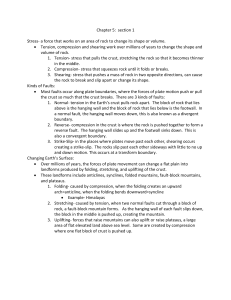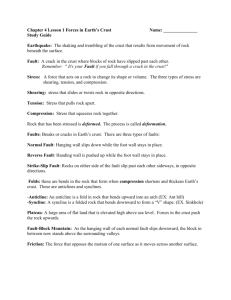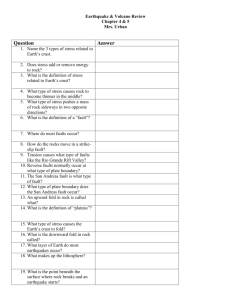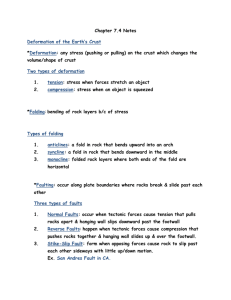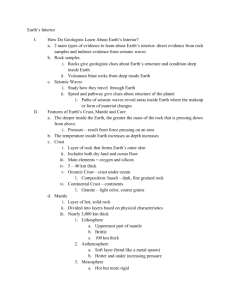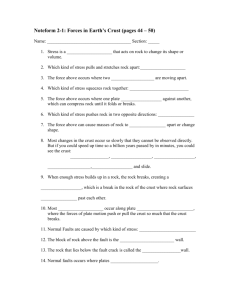Chapter 2, Section 1 – Forces in Earth`s Crust
advertisement
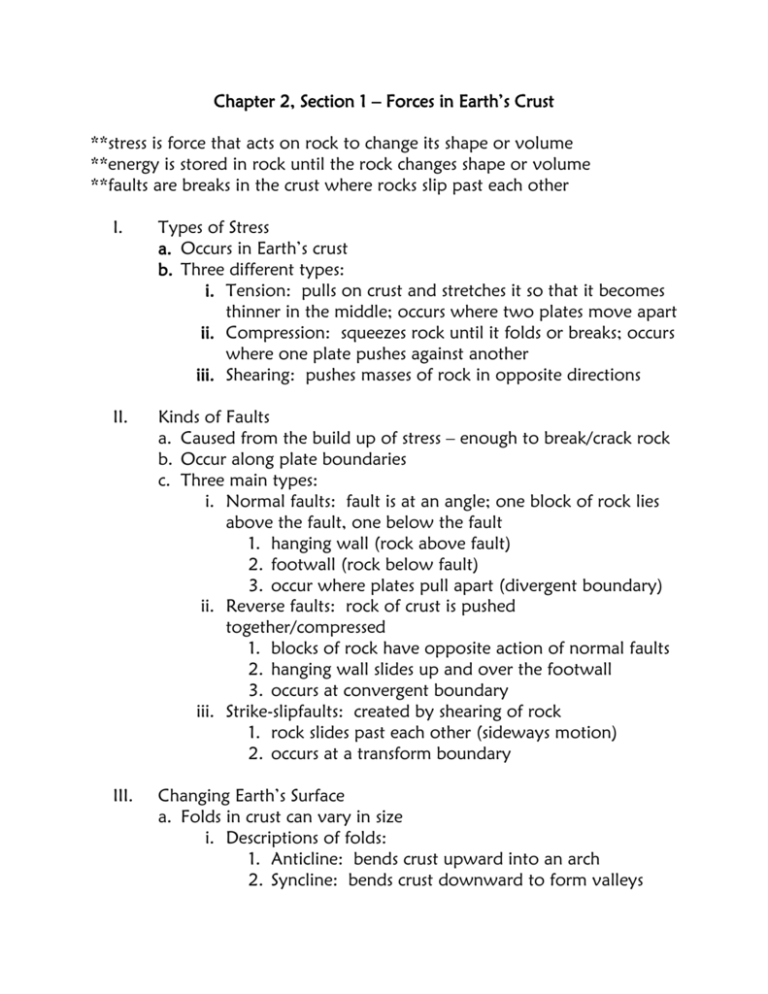
Chapter 2, Section 1 – Forces in Earth’s Crust **stress is force that acts on rock to change its shape or volume **energy is stored in rock until the rock changes shape or volume **faults are breaks in the crust where rocks slip past each other I. Types of Stress a. Occurs in Earth’s crust b. Three different types: i. Tension: pulls on crust and stretches it so that it becomes thinner in the middle; occurs where two plates move apart ii. Compression: squeezes rock until it folds or breaks; occurs where one plate pushes against another iii. Shearing: pushes masses of rock in opposite directions II. Kinds of Faults a. Caused from the build up of stress – enough to break/crack rock b. Occur along plate boundaries c. Three main types: i. Normal faults: fault is at an angle; one block of rock lies above the fault, one below the fault 1. hanging wall (rock above fault) 2. footwall (rock below fault) 3. occur where plates pull apart (divergent boundary) ii. Reverse faults: rock of crust is pushed together/compressed 1. blocks of rock have opposite action of normal faults 2. hanging wall slides up and over the footwall 3. occurs at convergent boundary iii. Strike-slipfaults: created by shearing of rock 1. rock slides past each other (sideways motion) 2. occurs at a transform boundary III. Changing Earth’s Surface a. Folds in crust can vary in size i. Descriptions of folds: 1. Anticline: bends crust upward into an arch 2. Syncline: bends crust downward to form valleys 3. folding has created some of the world’s largest mountains b. stretching crust i. can cause fault-block mountains 1. hanging walls from parallel, normal faults 2. hanging walls slip down and in turn, push center block of rock upward (mountain) c. uplifting crust i. forces push up flat blocks of rock


